‘Grease: Rise Of The Pink Ladies’, ‘Up Here’ And ‘Schmigadoon!’ Choreographers On Driving The Narrative Through Motion
- Oops!Something went wrong.Please try again later.
- Oops!Something went wrong.Please try again later.
- Oops!Something went wrong.Please try again later.
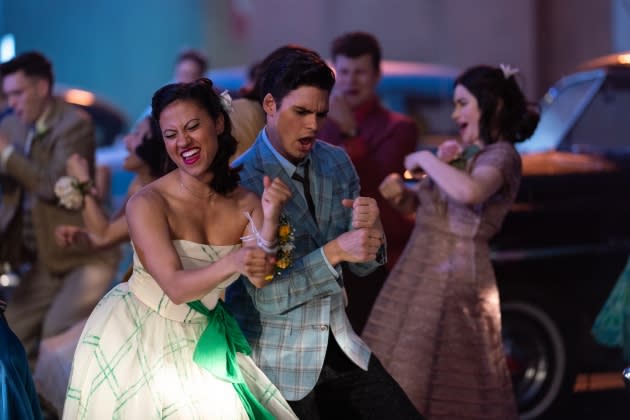
Singing is essential for telling stories in a musical, but the choreography makes up the visual component that allows the narrative to unfold in front of our eyes. This Emmy season has a number of musical series and specials, and the choreographers are in charge of visually driving those stories forward.
Grease: Rise of the Pink Ladies expands the universe of the 1978 film and brings a modern touch to the ’50s. Based on the stage musical of the same name, Up Here brings a motion-based narrative to inner thoughts. And inspired by musicals from the ’60s and ’70s, Schmigadoon! takes a dark turn in the land of Schmicago.
More from Deadline
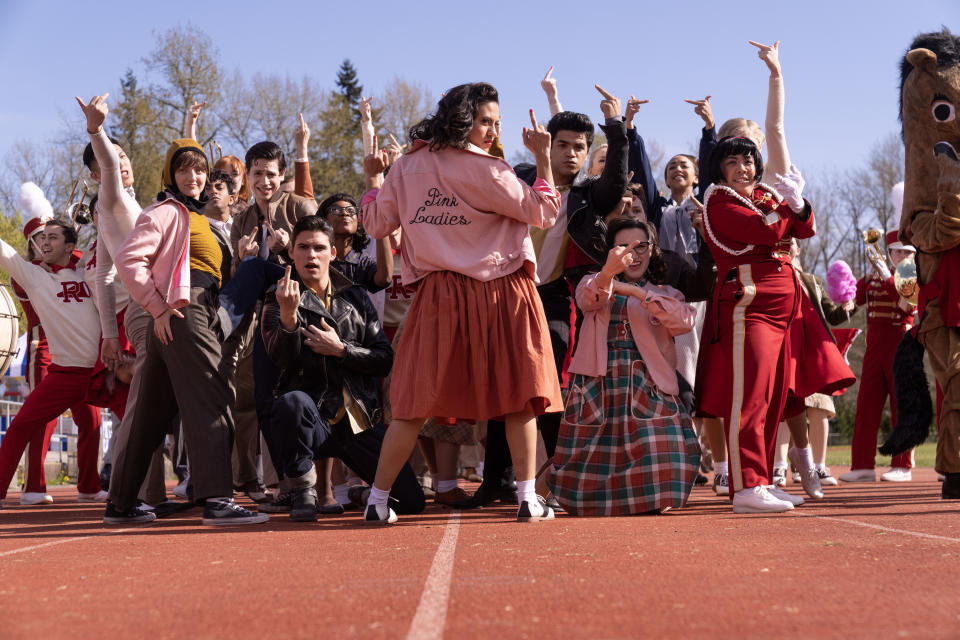
Grease: Rise of the Pink Ladies
While the show is not a remake of the original Grease film, choreographer Jamal Sims views Grease: Rise of the Pink Ladies as an extension of what’s already been developed. “There’s some modernisms in there,” says Sims, “but it’s not totally modern because I really wanted the ’50s to come through.”
Grease: Rise of the Pink Ladies takes place four years before the original film’s events and follows the beginnings of the girl gang that would usher Rydell High into a new era. Sims took inspiration from the choreographer of the original film, Patricia Birch, who he says was “in my bones” during the production.
“I knew every step from the original,” says Sims, “so I felt like when I was coming up with material, there were ‘isms’ that Patricia would put into her choreography that I would infuse into my choreography.” Though Birch served as a jumping off point, Sims wanted to make sure that the audience didn’t feel like they were getting more of the same. “I wanted to pay homage to her, but I also wanted to feel like it was fresh and new. I would call it ‘Grease it up’, which means it wasn’t too perfect because these are real kids dancing.”
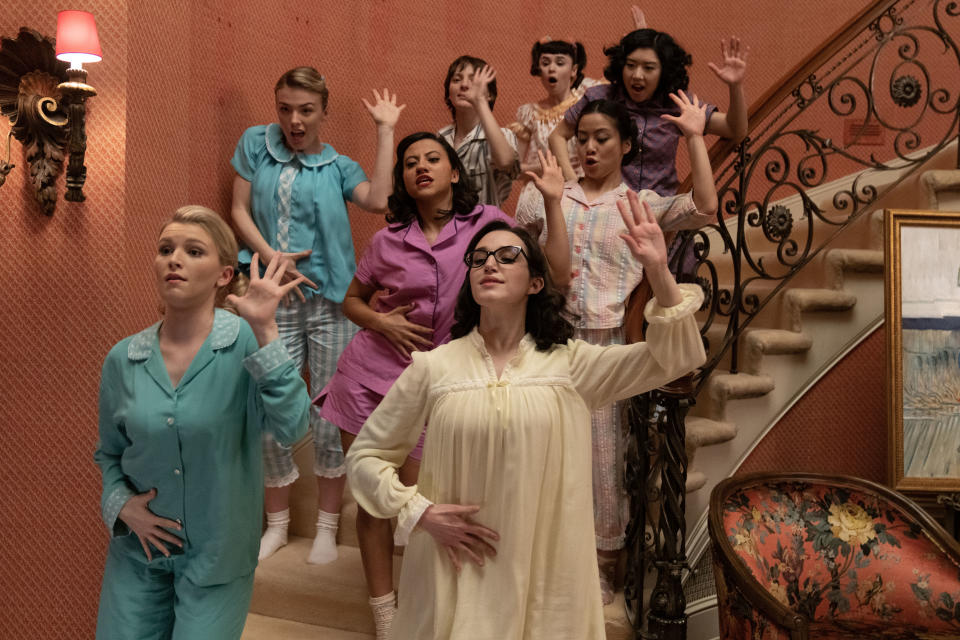
Sims’ approach meshed well with the intention of showrunner Annabel Oakes and director Alethea Jones, who wanted to make sure that each character would stand out. “We always keep our characters in mind and always fill the frame,” Sims says. “No matter where they are or what they’re doing, I always want to make sure that their character’s story was involved.” Even though a song begins, each story needs to continue. “Just because they stopped talking and they started singing doesn’t mean that we just stop everything. We’re still telling the story, and everybody still has something to do because their characters are still on a journey.”
The most challenging number of the season was “World Without Boys”, which Sims says he “blocked out” because it was so difficult. “Our visionary director Alethea Jones, came up with this idea that we were going to shoot the whole thing in reverse, so the dance is in reverse,” he says. Sims initially thought this would only be a challenge in choreographing a dance that looked good in reverse, but soon realized a bigger issue. “I didn’t really think about how they’re lip-syncing, so the lip-syncing has to go forward while they’re going backwards,” he says. “We decided that we were actually going to choreograph backwards moves, so that they could lip-sync while they were going.”
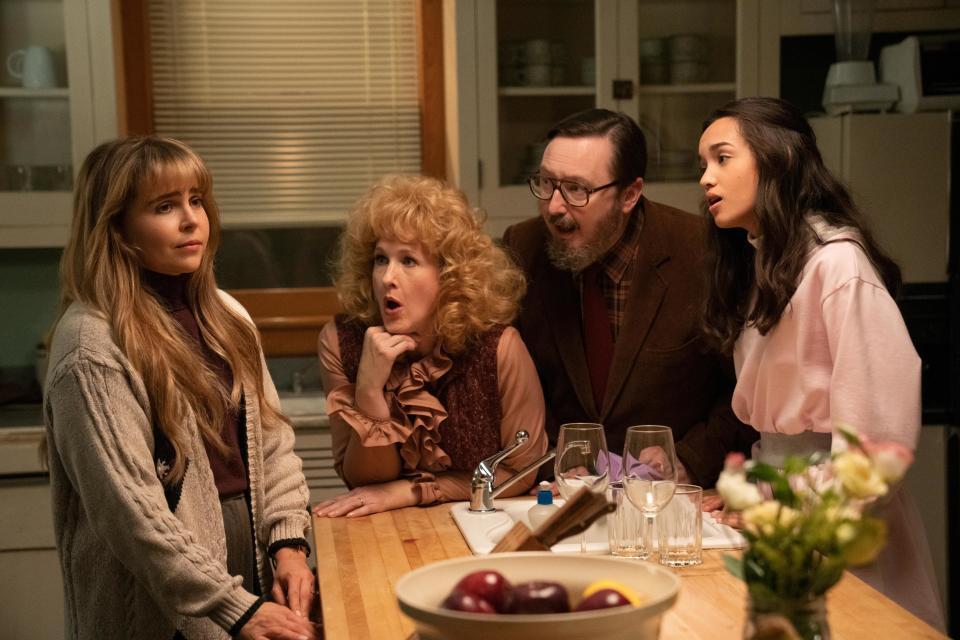
Up Here
For Up Here, choreographer Sonya Tayeh never felt constrained by the original choreography of the musical. “We didn’t talk about the stage production much,” Tayeh says. “It felt really fresh delving into how it would resonate on film.”
Up Here follows Lindsay (Mae Whitman) and Miguel (Carlos Valdes), a pair whose greatest obstacle in life is their own inner thoughts. As Lindsay struggles to become a writer and Miguel tries to rise in investment banking, they both have to deal with a trio of antagonistic voices in their heads. “The fear that those scary monsters in your mind, those traumatic experiences from your past that creep up into scenarios of stress, or taking a risk, or falling in love… those things are the root of the story,” Tayeh says. “That was my inspiration—what does it feel like to unlock that fear?”
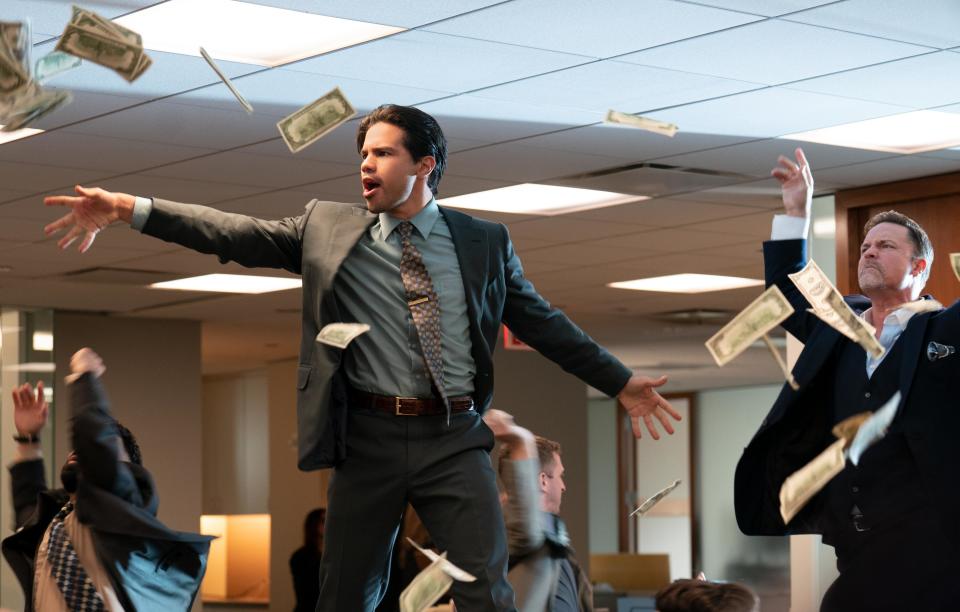
The best example of this is “I Am Not Alone”, a song where Miguel is stuck in a bathroom and singing about opening himself up to love. “The walls of his heart that have been closed off are breaking down, and that’s what the dance conveys—a melding and a waltz with words and the body.” To replicate the idea of walls being broken down, Tayeh asked the production designers if they could take the walls of the bathroom down as part of the choreography. They could have created a way to automate the walls moving, but she says it wouldn’t have felt right. “What’s so beautiful about the show is the emotionality and how tactile it is that the mind of Miguel is what’s breaking the walls down, so we used our incredible ensemble. That was a really challenging piece to mock up.”
Choreography was a large driving force in the narrative of the musical story, which Tayeh says is often overlooked. “I think dance gets underestimated and misunderstood,” she says. “When you’re in a musical and you’re singing the narrative, the movement is also singing the narrative in a different way.”
Tayeh is by no means discounting the importance of the songs, but she believes that the movement is an amplification of the singing. “When you’re singing and the body starts to move, you can almost hear the words like they’re in bold and capitalized,” she says. “You hear them deeper because the body is in motion conveying what the words are saying, which I think is beautiful.”
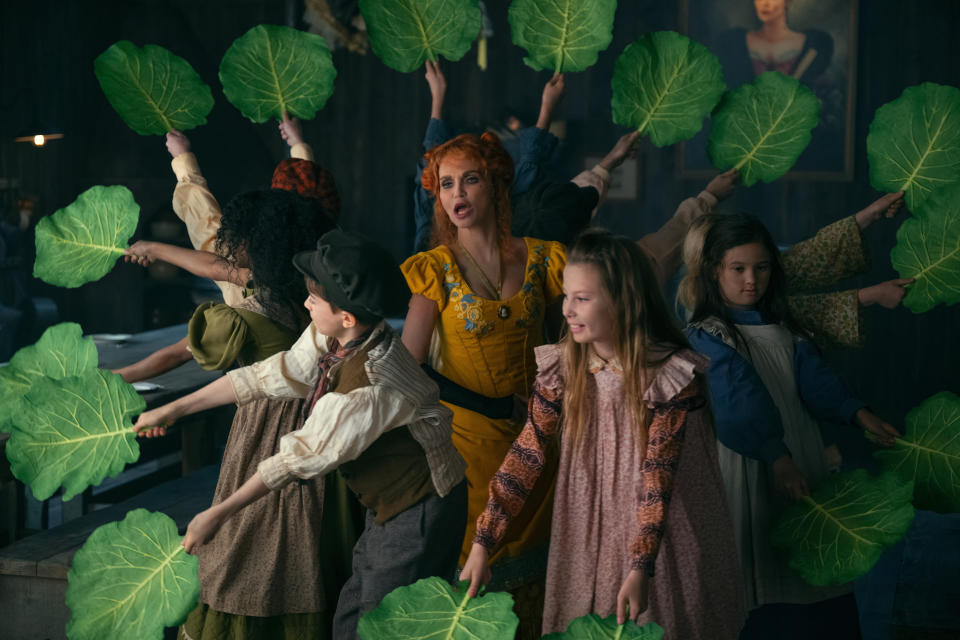
Schmigadoon!
Coming into its second season, Schmigadoon! took inspiration from musicals in the ’60s and ’70s, which choreographer Christopher Gattelli was very excited about. “It’s so much fun to have a whole bunch of new choreographers to pay homage to,” he says. Growing up with musicals during the time of Bob Fosse and Michael Bennett, he says it was a great opportunity to “dig back into their work and get to play with that.”
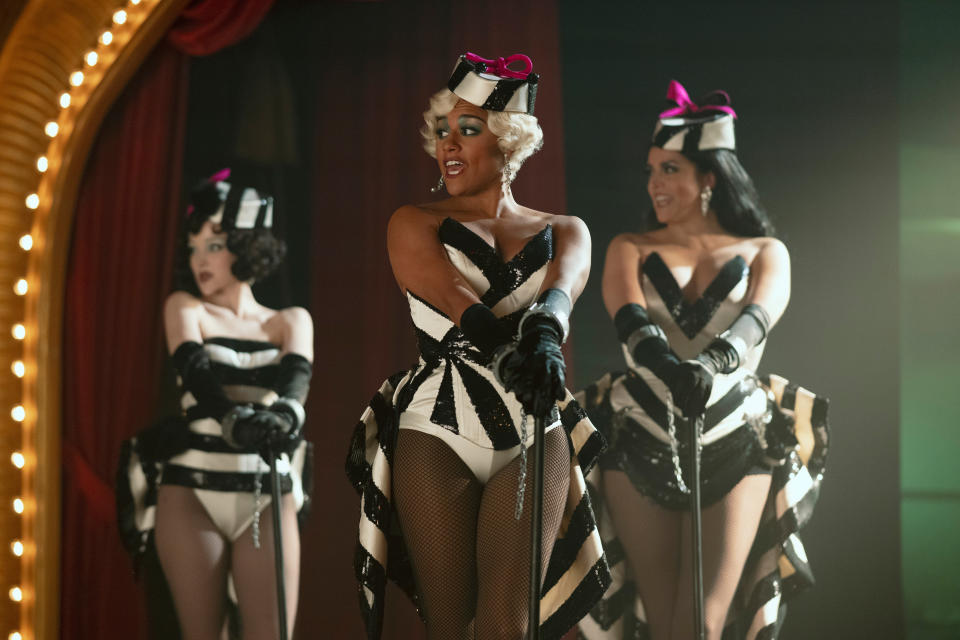
This season of Schmigadoon! sees Melissa (Cecily Strong) and Josh (Keegan-Michael Key) searching for a return to the fantastical land of Schmigadoon, only to find themselves in the much darker locale of Schmicago. Gattelli says they took inspiration from shows like Cabaret, Chicago, Sweet Charity, Annie and many more. “Once you start to talk about inspirations, it goes off in so many different branches because it was such a great time for theater.”
One of the biggest changes this season was in how the numbers were filmed. “The camera angles and the way things were shot in the ’60s and ’70s started to get more experimental,” he says. Whereas inspirations for the first season, like Oklahoma!, focused on more wide, continuous shots, this season took an approach that made each detail of the choreography more important. “Fosse especially played with a lot of camera work, in terms of isolating a dancer’s foot, or their face, or a wrist snap. It’s just a great eye for detail in terms of wanting to tell a story.”
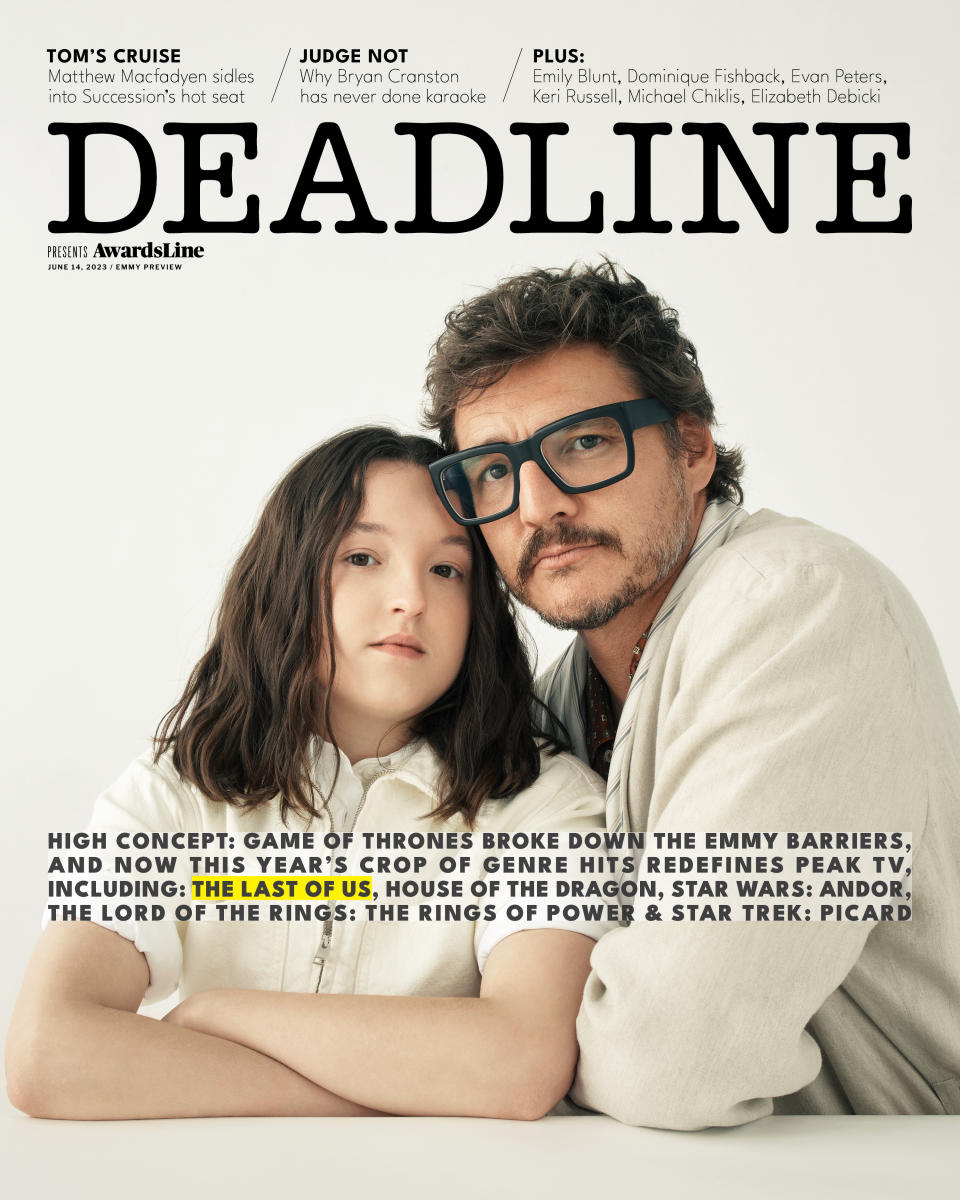
Fosse’s choreography was so ingrained with musicals of that time period, that Gattelli says he needed to have some homages. “I think the iconic thing is Fosse with his jazz hands,” he says. “It’s very iconic, just the physicality of the position.” With a series that takes inspiration from many different places, it was important for Gattelli to include his own flair. “You try to check all the boxes for everything people are going to feel familiar with, but not lift it completely.”Since closeups and experimental shots were used, Gattelli says their scheduling became more efficient as dance numbers did not need to be filmed all at once. “Because of the different camera shots, we were able to go in and plan the days,” he says. “We did a lot of pre-production. It was really shot out of order for the most part because we were trying to be efficient with getting as many awesome, different viewpoints for the numbers.”
Best of Deadline
TV Cancellations Photo Gallery: Series Ending In 2023 & Beyond
2023 Premiere Dates For New & Returning Series On Broadcast, Cable & Streaming
Sign up for Deadline's Newsletter. For the latest news, follow us on Facebook, Twitter, and Instagram.

